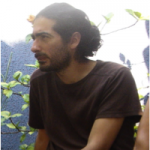Link to Pubmed [PMID] – 379750
Pathol. Biol. 1979 Jan;27(1):21-9
It has been realized for a century that Ca2+ is important in the initiation and the control of mechanical activity. The present paper does not cover the field of excitation-contraction coupling in heart but mainly reports some modern and controversial aspects about the regulation of the internal Ca concentration by the sarcolemma while the role of internal stores is only discussed. The first part deals with flux experiments; the second with the slow inward current mainly carried by Ca ions. An analysis of the mechanical activity reveals that only a part of tension is triggered by this slow current; besides, a second component of tension is demonstrated and an exchange mechanism of Na and Ca ions is described in detail. This countertransport, during depolarization, facilitates an influx of Ca ions (coupled to an efflux of Na ions). During hyperpolarization, or even at the resting membrane potential, it promotes an efflux of Ca ions. Thus, the same mechanism may account in part for the development or for the relaxation of tension according to the membrane potential.

